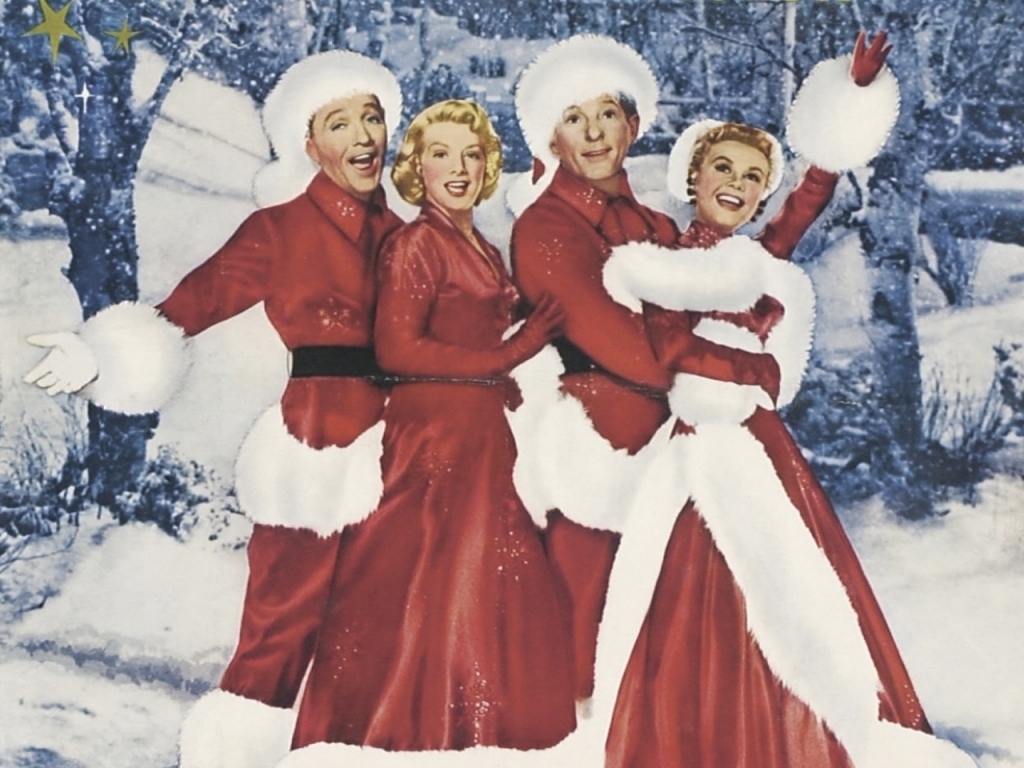by Chris Feil
White Christmas is a classic “let’s put on a show to save the barn” musical, except its traveling entertainers are saving... a resort hotel in Vermont. What it isn’t is a Christmas staple that has all that much to do with Christmas. Despite the title, the film is closer to a winter-set cousin to the likes of Gentlemen Prefer Blondes or Summer Stock, and still we watch it every holiday season. Perhaps that’s partial carryover from Bing Crosby’s White Christmas album (more of a staple in my household than the film was) and Crosby’s other holiday films (ditto, strangely) - his presence alone is enough to make him some baritone duke of the holiday season in the eyes of audiences.

But the titular song (and album opener) bookends the film, creating its own kind of holistic narrative arc. The film is rooted in a military sense of displacement and longing for the loving stability of domesticity. When we first hear Crosby’s Bob Wallace sing the song to an audience of soldiers, the tune’s sense of melancholy is heightened when reflected against their worn faces. Immediately, the film is establishing the song as more than a holiday standard but as a symbol of the heartache of war.
The film closes with the number again, this time in splashier production value than Wallace and his partner Danny Kaye’s Phil Davis previously had while in service. The orchestration is brighter and more joyously festive, but even more importantly, Wallace and Davis perform with their loves, Rosemary Clooney and Vera-Ellen’s Betty and Judy Haynes. Here it feels like a reconciliation of the song’s previous sadness, a feeling of fulfillment of the hopes buried within the melody, and not just the wish for a snow-covered scene. It’s a fantasy manifestation of every idyllic thing wished for in the song, Christmas becoming a destination in time and state of mind.
And packed in the middle of that arc is mostly vaudeville numbers with little holiday significance, with White Christmas serving more backstage than holly jolly. But this is no complaint when we get such old-fashioned iconography as “Sisters”, a number so perfect that it defies the need for context. The Haynes sisters are costumed in ice blue if you need something seasonal (eat your heart out Elsa and Anna).
Not to be overlooked, the film does remind us of its winter setting with “Snow” as the future couples head to the supposed snow capital of Vermont. Even if it’s the rare winter-themed song without ties to Christmas tradition or sentiment, it comparatively feels like a winter oasis to the rest of the film. And it’s two very different love stories beginning to take shape over the shared affection for the most unlikely of subjects.
But perhaps White Christmas’ most attuned number to the Christmas spirit isn’t a Christmas song anyway. The Oscar-nominated “Count Your Blessings Instead of Sheep” may make for odd late-night flirtation between Bob and Betty, but it does play into the holiday’s sentimentality and spirit of gratitude. That melancholy sense that undercut the first rendition of “White Christmas” is also here, bringing to life the spirit of reflection that Christmas carries. The film as a whole may not seem all that Christmasy, but it’s subtler undertones make for something that’s at home in the season.
All Soundtracking installments can be found here!